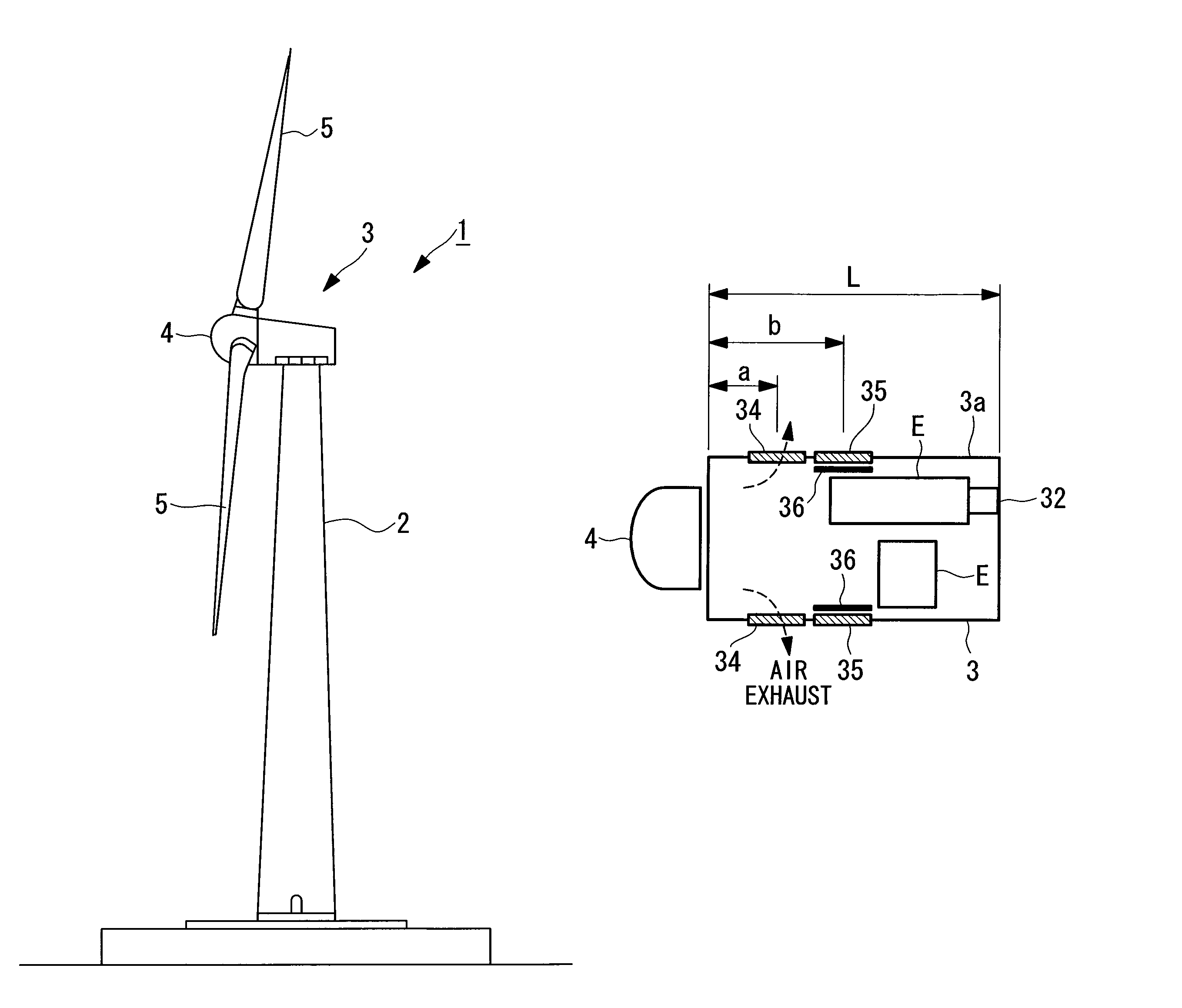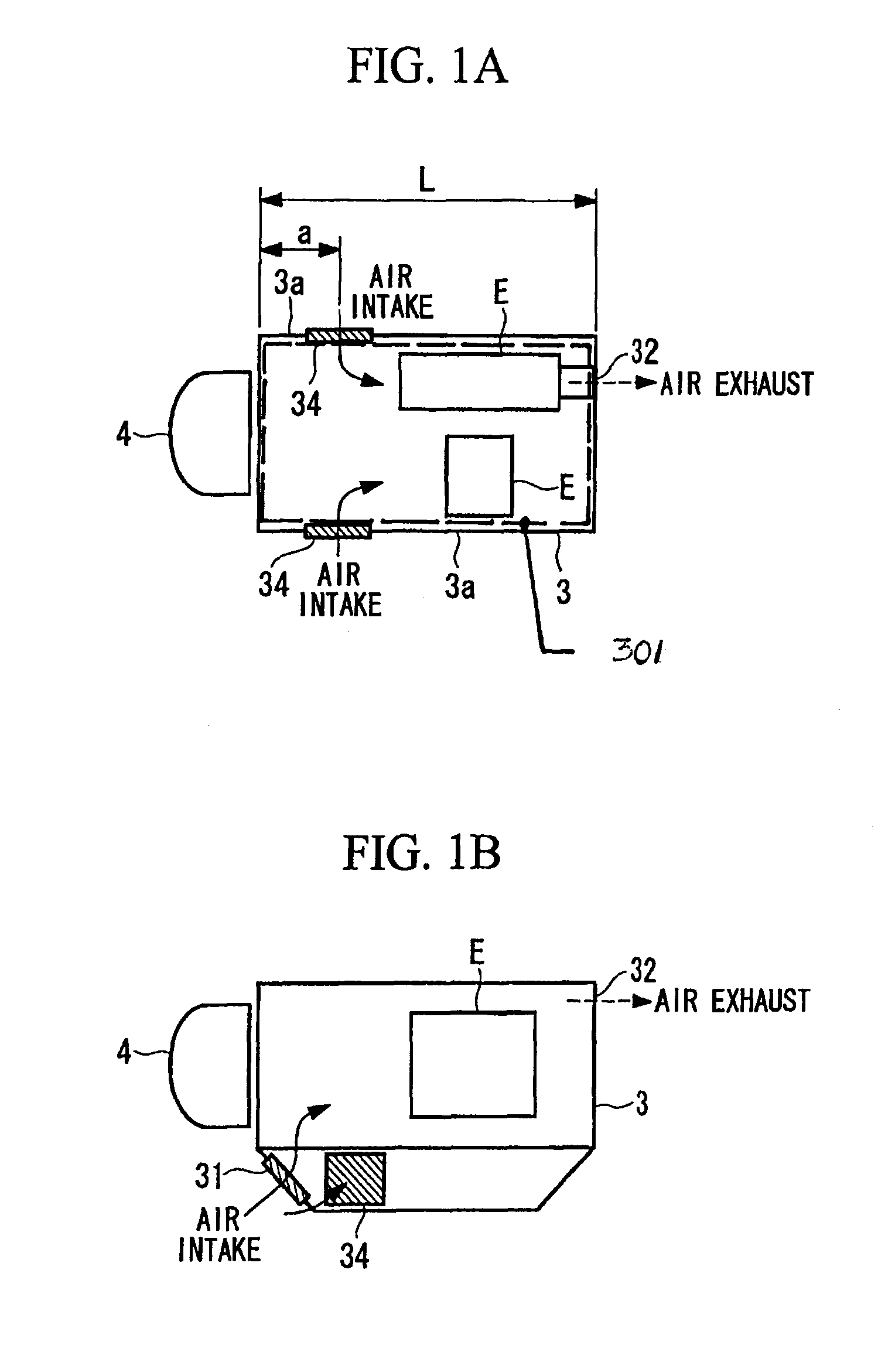Wind turbine generator system
a generator system and wind turbine technology, applied in the direction of electric generator control, machine/engine, cabinet/drawer/drawer, etc., can solve the problems of equipment damage, equipment damage, and equipment damage caused by an increase in the temperature of the equipment e, so as to improve the efficiency of air exhaust and reduce the effect of negative pressur
- Summary
- Abstract
- Description
- Claims
- Application Information
AI Technical Summary
Benefits of technology
Problems solved by technology
Method used
Image
Examples
first embodiment
[0066]In such a wind turbine generator system 1, which will be described below, for example, as shown in FIGS. 1A, 1B, 2A, and 2B, side air inlets 34 are additionally provided in the side faces of the nacelle at positions where a negative pressure is generated by outside air flowing outside the nacelle 3. These side air inlets 34 are provided on both side faces of the nacelle 3.
[0067]The air inlet 31 is an opening provided at a lower portion of the front face of the nacelle 3 and is provided with a louver 40 described below. The lower portion of the front face in this case is a region lower than the position where the rotor head 4 rotates and is approximately near the bottom face of the nacelle 3.
[0068]The air outlet 32 is an opening for exhausting air and is disposed at an upper portion of the rear end face of the nacelle 3. This air outlet 32 is coupled to the outlet of a ventilation fan, which is disposed, for example, near the center of the upper end face of the nacelle 3, throu...
second embodiment
[0076]Next, the wind turbine generator system according to the present invention will be described with reference to FIGS. 4A, 4B, 5A, and 5B. Portions similar to those in the above-described embodiment are denoted by the same reference numerals and their detailed description is omitted.
[0077]In this embodiment, the rearward side air inlets 35 are additionally provided at positions that are located rearward of the nacelle with respect to the above-described side air inlets 34 and are located in non-negative pressure regions, where the negative pressure is eliminated, of the nacelle side faces 3a. These rearward side air inlets 35 are each provided with, for example, a slidable door member 36, as switching means for selecting an open or closed state of the side air inlets 34 and the rearward side air inlets 35.
[0078]The slidable door members 36 are configured so as to be capable of selecting an open or closed state where only the side air inlets 34 or the rearward side air inlets 35 ...
PUM
 Login to View More
Login to View More Abstract
Description
Claims
Application Information
 Login to View More
Login to View More - R&D
- Intellectual Property
- Life Sciences
- Materials
- Tech Scout
- Unparalleled Data Quality
- Higher Quality Content
- 60% Fewer Hallucinations
Browse by: Latest US Patents, China's latest patents, Technical Efficacy Thesaurus, Application Domain, Technology Topic, Popular Technical Reports.
© 2025 PatSnap. All rights reserved.Legal|Privacy policy|Modern Slavery Act Transparency Statement|Sitemap|About US| Contact US: help@patsnap.com



